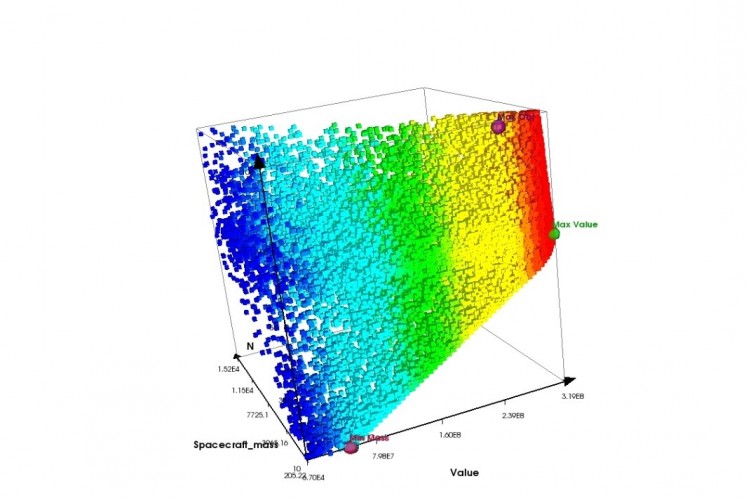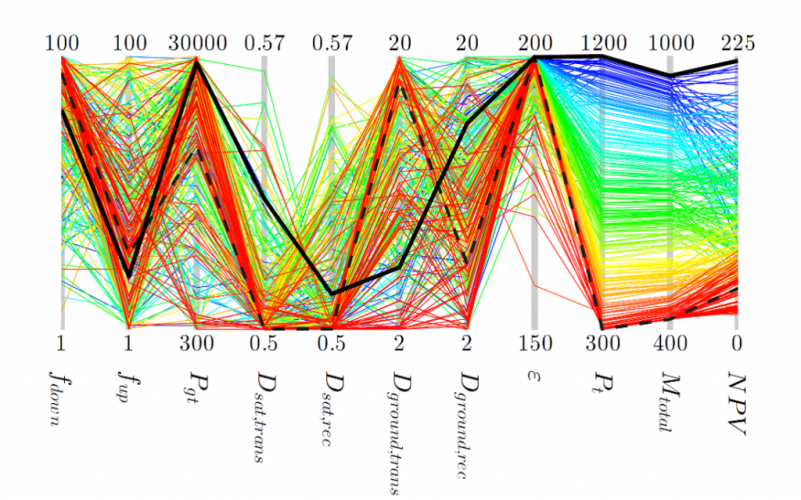The work completed involved a satellite design system comprising a satellite, ground station, and launch vehicle is used to demonstrate effectiveness of new visualization methods to aid in decision support during complex aerospace system design. These methods are used to facilitate the exploration of the feasible design space by representing the value impact of system attribute changes and comparing the results of multi-objective optimization formulations with a Value-Driven Design formulation. The visualization methods are also used to assist in the decomposition of a value function, by representing attribute sensitivities to aid with trade-off studies. Lastly, visualization is used to enable greater understanding of the subsystem relationships, by displaying derivative-based couplings, and the design uncertainties, through implementation of utility theory. The use of these visualization methods is shown to enhance the decision-making capabilities of the designer by granting them a more holistic view of the complex design space.
“Visualization” Of LSCES
Visualization can be used to support decisions by communicating in a meaningful. This research involves the use of Multi-dimensional visualization tools to help designers have a better understanding of the design space. It also supports decision making under uncertainty during the Value-Driven Design process.



